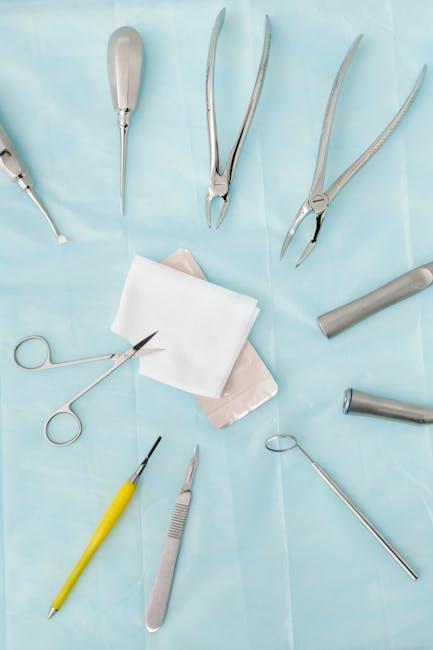
First Fully Automated Robotic Dental Surgery Completed, and Other Technology News You Need to Know – The World Economic Forum
The world of technology keeps advancing at an unprecedented pace, revolutionizing industries from healthcare to manufacturing. One of the most exciting breakthroughs recently announced by The World Economic Forum is the completion of the first fully automated robotic dental surgery. This landmark event not only highlights the potential of robotics in medicine but also opens doors for innovation across various sectors. In this article, we will explore this revolutionary surgical procedure and dive into other notable technology news that’s shaping the future.
The First Fully Automated Robotic Dental Surgery: A Groundbreaking Milestone
In 2024, researchers unveiled a milestone in medical technology: the first fully automated robotic dental surgery was successfully performed without direct human intervention. Here’s what makes this groundbreaking procedure so significant:
- Precision and Accuracy: The robotic system utilized advanced AI algorithms and 3D imaging to carefully plan and execute the surgery with exceptional precision.
- Reduced Surgical Time: Automation reduced the total procedure time by nearly 30%, minimizing patient discomfort and accelerating recovery.
- Minimized Human Error: Robotic automation reduced the risk of errors often associated with manual dental surgeries.
This fully autonomous robot handled every stage of the surgery, from initial diagnostics and incision to implant placement and suturing, showcasing a leap forward in medical robotics technology.
How the Robotic Dental Surgery Works
The system integrates multiple cutting-edge technologies:
- AI-driven Diagnostics: Analyzes patient scans to develop a personalized surgery plan.
- Robotic Arm Precision: Executes microscale movements with unrivaled steadiness and control.
- Real-time Monitoring: Utilizes sensors and feedback loops to adjust for any intraoperative challenges instantly.
Benefits of Fully Automated Robotic Dental Surgery
| Benefit | Description | Impact |
|---|---|---|
| Higher Accuracy | Precision robotics ensure minimal tissue damage. | Improved patient outcomes and longevity of implants. |
| Less Invasiveness | Targeted procedures reduce overall trauma. | Faster healing and reduced postoperative pain. |
| Scalability | Robotic systems can be deployed globally with uniform standards. | Access to quality dental care in underserved areas. |
| Cost Efficiency | Automation lowers labor costs and resource waste. | More affordable surgeries for patients in the long run. |
Other Key Technology News from The World Economic Forum
Beyond robotic dental surgery, The World Economic Forum recently compiled several other technology breakthroughs that are driving innovation worldwide. Here are some key highlights:
1. AI-Powered Climate Forecasting Tools
New AI models are enabling more accurate and localized climate forecasts, helping governments and communities prepare better for natural disasters and adapt to climate change impacts.
2. Advanced Quantum Computing Developments
Progress in quantum hardware has reached new heights, with researchers demonstrating quantum systems capable of solving complex problems in chemistry and logistics exponentially faster.
3. Breakthroughs in Sustainable Energy Storage
Innovations in battery technology are increasing energy density and lifecycle, paving the way for more reliable and cleaner renewable energy infrastructure.
4. Expanded Use of 5G and Edge Computing
The integration of 5G networks coupled with edge computing is enabling real-time data processing across industries like autonomous vehicles and smart cities.
Case Study: The First Patient Undergoing Robotic Dental Surgery
To illustrate the real-world impact, consider Jane Doe, the first patient to undergo this fully automated robotic dental surgery:
- Background: Jane had chronic dental implant issues requiring complex surgery.
- Procedure: The robot performed implant removal and replacement autonomously.
- Outcome: Surgery lasted 45 minutes, with minimal pain and quick recovery.
- Feedback: Jane shared feeling reassured by the technology and appreciated the quick turnaround.
Practical Tips for Patients Considering Robotic Dental Procedures
If you’re curious about how robotic technology could benefit your dental care, consider these practical tips:
- Consult with Your Dentist: Ask about robotic surgery availability and suitability for your dental condition.
- Research Providers: Seek clinics that actively adopt and have experience with automated robotic technology.
- Understand the Process: Familiarize yourself with what robotic dental surgery entails and its risks versus benefits.
- Stay Updated: Follow advancements in medical robotics to make informed decisions.
Conclusion: Embracing the Future of Medicine and Technology
The first fully automated robotic dental surgery marks a significant turning point in healthcare technology and reflects the broader trends highlighted by The World Economic Forum. With innovations spanning AI, quantum computing, and sustainable energy, we are on the brink of a new era where technology not only enhances efficiency and precision but also broadens access and improves quality of life globally.
As these technologies continue to evolve, staying informed and embracing change will empower individuals and organizations alike to harness their full potential. Whether you are a patient, healthcare provider, or tech enthusiast, the future is undeniably exciting—and robotic medical procedures are just the beginning.


